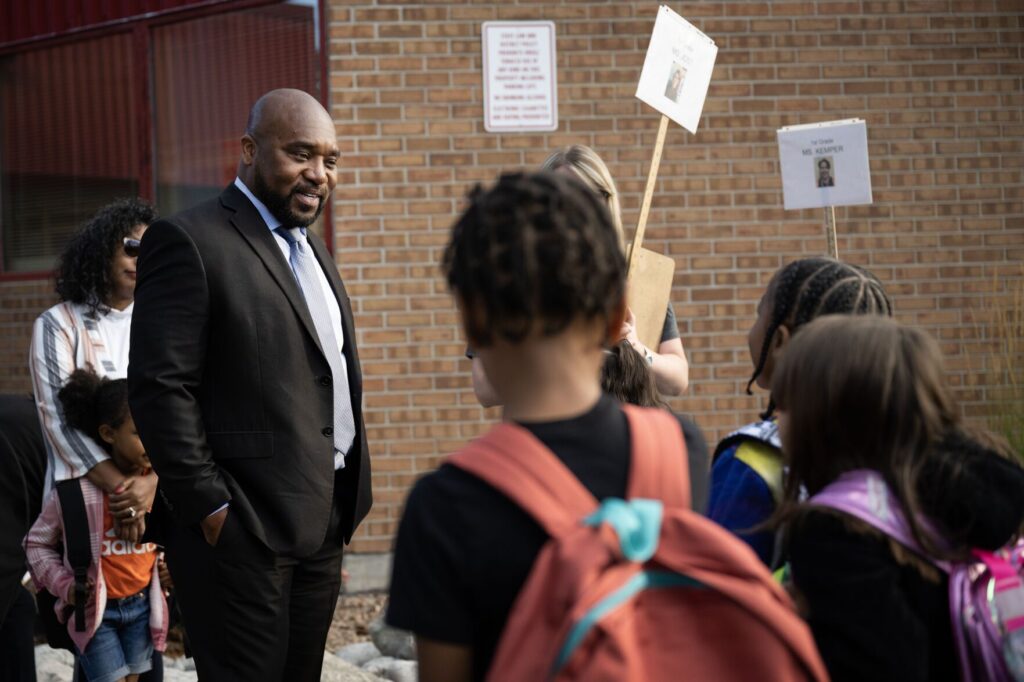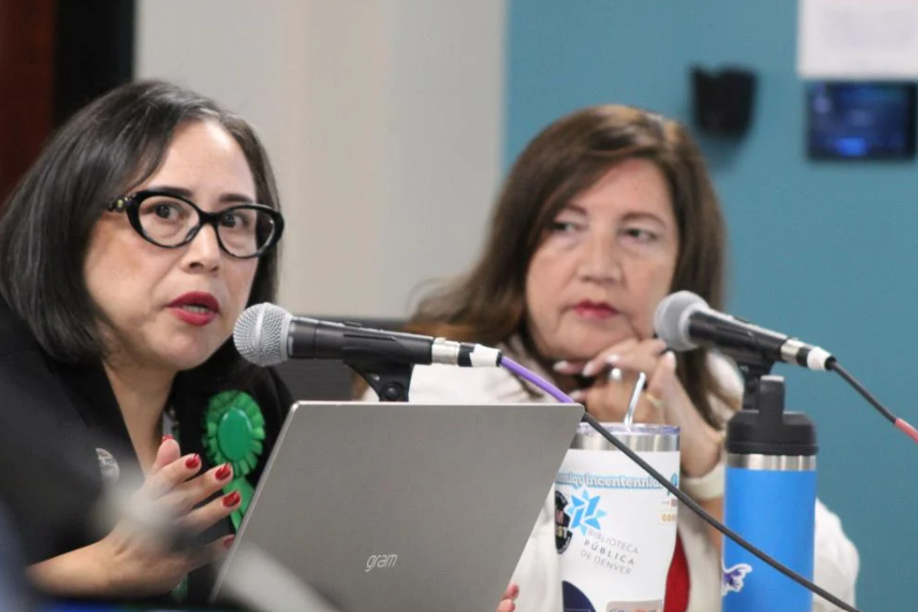Colorado’s budget stabilization factor to be eliminated, paving the way for fully-funded education

Colorado lawmakers were happy to announce that the state’s education budget stabilization factor, known as the “BS factor,” will be eliminated this year, paving the way for schools to get $10 billion in the 2024-25 school year, an estimated increase of $400 more per student. However, advocates say there is still work to do as school funding levels have not caught up with inflation.
This is going to be made possible when lawmakers pass the Public School Finance Act, Senate Bill 188.
During the aftermath of the Great Recession, the state introduced the budget stabilization factor to address deficits in its education budget. The factor represents the gap between the amount the state is constitutionally required to provide to school districts under Amendment 23 and the actual amount of funding available.
When there wasn’t enough money to fully fund districts at the constitutionally required level, the budget stabilization factor was applied to reduce the amount of funding districts would receive from the state. About $10 billion has been diverted from school districts due to the budget stabilization factor, sparking criticism from educators, parents, and lawmakers, and prompting legal challenges in the courts.
Last year’s Public School Finance Act set the budget stabilization factor’s repeal for July 1, 2024, and legislators and representatives from school districts across the state were in a celebratory mood during the Senate Education Committee’s meeting to discuss this year’s version of the Act.
“This is a huge step, a major step, in ensuring our schools have the resources to provide our students with the education they need,” said bill sponsor Sen. Janet Buckner, D- Aurora, who noted that the mechanism’s elimination will increase school district budgets to over $400 per student.
The bill sets the statewide total program funding at $9.7 billion for fiscal year 2024-25 and requires the state treasurer to transfer $15.7 million from the state education fund to the mill levy override match fund.
Eliminating the “BS Factor”
An entire generation of students in Colorado never had the opportunity to learn in a fully-funded classroom. The lack of sufficient funding due to the budget stabilization factor has resulted in underpaid teachers, overcrowded classrooms, and limited access to mental health services and extracurricular activities, educators say. Getting rid of the budget stabilization factor will provide schools with additional funds to provide a higher-quality education to students and improve the financial well-being of educators and staff.
“The School Finance Act shows that our legislators have listened and made good on their promise,” said Amie Baca-Oehlert of the Colorado Education Association. “This is a historic investment in Colorado’s education system and the first step towards a fully-funded future for our students, educators, and communities.”
Bret Miles of the Colorado Association of School Executives was a school superintendent when the budget stabilization factor was introduced 15 years ago. He said he and his colleagues initially supported the measure as a short-term solution to help Colorado schools navigate the Recession. Miles said he was overjoyed to see the culmination of many years of work on behalf of countless legislators, teachers, administrators and advocates to buy down the budget stabilization factor.
“It’s a huge celebration to get to today, and it’s a source of pride to sit here and personally say thank you, because I got to live it on the other side for a really long time,” he said.
Increased funding for rural schools
Along with eliminating the budget stabilization factor, the bill also permanently incorporates rural school funding into the formula used to calculate each district’s funding allotment. This adjustment is expected to offer additional financial support to both large and small rural school districts, which advocates say is long overdue.
The “rural factor”, as it’s known, was first introduced to the Public School Finance Act’s program formula in 2018 as a one-time increase in funding for rural schools. According to Buckner, it was subsequently extended three more times, most recently last year.
The bill provides large rural districts, defined as those with more 1,000 but fewer than 6,500 K-12 students, with an allocation of $177 per pupil or $100,000, whichever amount is greater. Small rural schools, with fewer than 1,000 students, will receive over $470 per student or $10,000. According to Cherry Creek Schools superintendent Christopher Smith, 146 of the state’s 178 school districts are rural.
“It’s important to support all school districts as they serve kids in diverse ways that are most appropriate and suitable for their community,” he said.
“We wanted to make sure that our rural districts are taken care of, and that this new funding reflects that importance,” she said
State education funding still has a ways to go, advocates say
While educators celebrated the elimination of the budget stabilization factor, they warned legislators not to get too excited just yet. When adjusted for inflation, the state’s spending on education will be about the same as it was in 1989. Miles said districts across the state are struggling to pay teachers a livable wage and maintain extracurricular programs amidst financial limitations.
“The efforts that we have to have to make sure that we can fund a salary schedule year-to-year have never been more stressful than right now,” he said.
According to Smith of Cherry Creek Schools, Colorado’s school funding ranks in the bottom third nationwide, and per-pupil spending was already below the national average prior to the introduction of the budget stabilization factor.
Furthermore, Smith highlighted the fact that school funding in the state has not kept pace with inflation or accounted for major changes within districts, such as testing standards or community demographics. He noted that his district alone serves 53,000 students that speak over 150 different languages, and one-third of those students receive free or reduced lunches-a number that continues to rise.
“School districts cannot afford another decade of substantial funding being withheld from our students and teachers,” Smith said. “Any sort of cut in funding or changes to the School Finance Act formula without adequate and sustainable funding will have a negative impact on all the students and employees and communities in the state of Colorado.”
Senator Chris Kolker, D- Centennial, highlighted that even if the state was funding districts at the constitutionally-required level, there will likely still be inadequacies.
“We’re fully funding according to the law, but we’re not fully funding to the need, are we?” He asked.
Looking to the future
Now that the budget stabilization factor has been eliminated, Zenzinger emphasized the importance of shifting the state’s focus towards adequate funding for districts in high-needs categorical areas, such as special education and English language-learner programs.
“We’re checking off a bunch of boxes that have been outstanding, I believe, with regard to school funding for a number of years, but we just haven’t quite gotten fully there yet,” she said.
For the first time in many years, Zenzinger said, the state will be fully funding the special education categorical, which has been federally mandated but left underfunded for many years, leaving districts with around $900 million in unreimbursed expenses.
Zenzinger anticipates the state will be able to fully fund its gifted and talented categorical next year and expressed her hope that the Education Committee will prioritize providing more funding to the state’s English language-learner programs in the years to come, as she is in her final term as a representative.
While funding for English language-learner programs is federally mandated, the state’s categorical is only being funded at 22%, Zenzinger said. She cautioned committee members that the sate has already received warnings from the federal government that it was getting “dangerously close” to not being in compliance with federal requirements.
“This is a happy day”
While it was evident that there was still work to be done to address the shortfalls in school funding, committee members and their colleagues in the education field breathed a collective sigh of relief knowing that after 15 years, schools will no longer be in such dire straits when it comes to state funding.
“This is a happy day,” said Sen. Buckner. “This is what we have been striving for for so long, and it’s actually coming to fruition today.”
Zenzinger became emotional as she spoke of the individuals who worked for years to rid the state of the budget stabilization factor. “Every single person in this room and every single member of this committee has played a part in bringing us to where we are today,” she said.
Senator Kolker reminded his colleagues that while the day was certainly cause for celebration, they couldn’t lose sight of their priorities for the future.
“We must be diligent, because those of us who are still here have to keep focusing and have to keep the messaging going that we’re not done, and that we’re tired of budgeting to an arbitrary number and not to a need,” he said.
The bill passed unanimously and will now go before the Appropriations Committee.










